Best Interior Design Styles: Transform Your Home with These Timeless Concepts by Hashtagdesignstudio
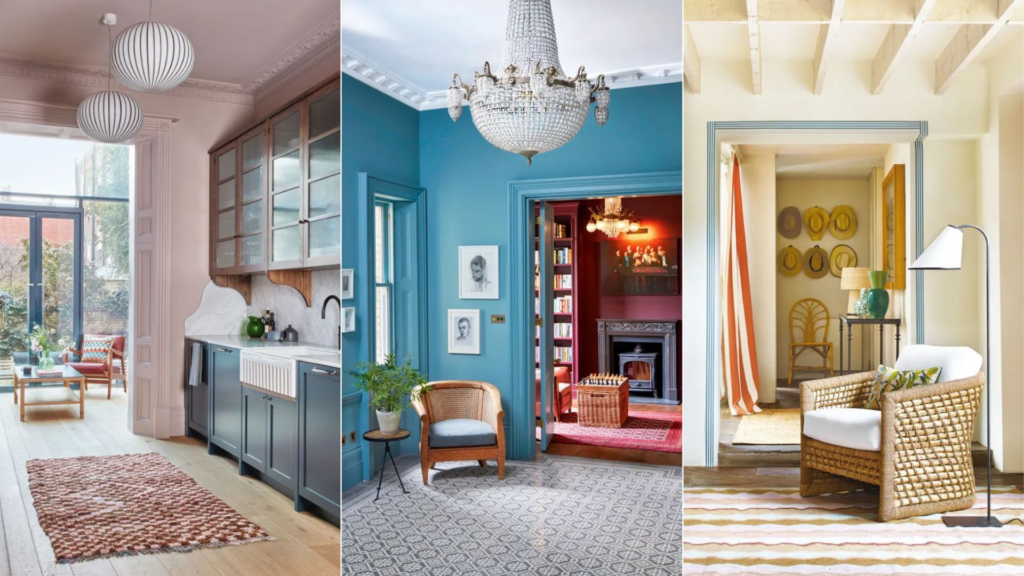
Interior design is a fascinating field that combines creativity, functionality, and aesthetics to enhance our living spaces. With countless styles to choose from, it can be daunting to find the one that best suits your personality and needs. This comprehensive guide will walk you through some of the most popular and timeless interior design styles, providing you with the inspiration and knowledge to create your dream home.
1. Modern Interior Design
Modern interior design is characterized by clean lines, minimalist decor, and a focus on function. This style emerged in the early to mid-20th century and has remained a favorite due to its timeless appeal and simplicity.
Key Features:
- Clean Lines: Emphasis on straight lines and geometric shapes.
- Minimalism: Less is more; minimal accessories and clutter-free spaces.
- Neutral Color Palette: Whites, grays, and blacks dominate, with occasional pops of bold color.
- Natural Materials: Use of steel, glass, and natural wood.
- Functional Furniture: Pieces that are both stylish and practical.
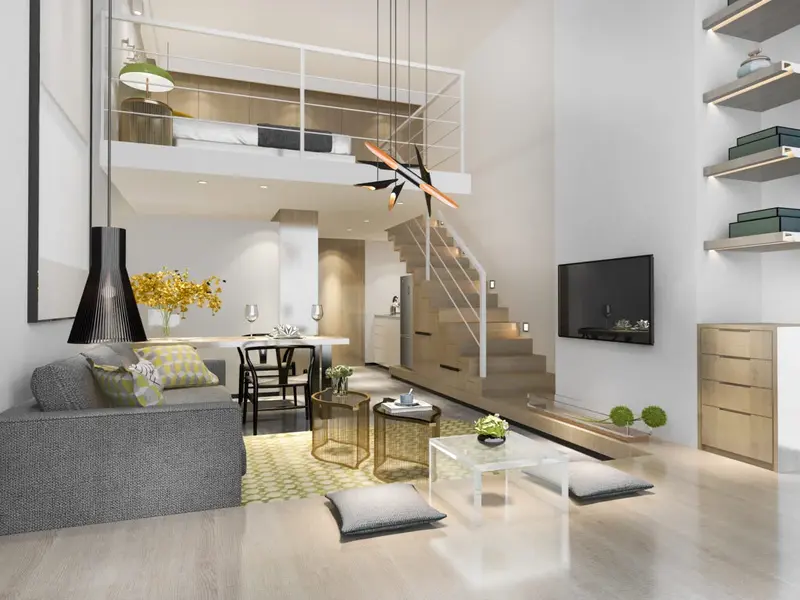
How to Achieve Modern Style:
- Choose furniture with sleek, straight lines and minimalist design.
- Use a neutral color palette as the base and add bold accent colors sparingly.
- Incorporate materials like glass, metal, and natural wood.
- Keep decor minimal and focus on functional accessories. Learn more on HGTV.
2. Contemporary Interior Design
Often confused with modern design, contemporary interior design is ever-evolving, reflecting current trends and technologies. Unlike modern design, which is rooted in a specific time period, contemporary design is fluid and dynamic.
Key Features:
- Neutral Color Scheme: Dominated by black, white, and neutral tones with subtle pops of color.
- Open Spaces: Emphasis on open floor plans and uncluttered spaces.
- Natural Light: Large windows to allow natural light to flood the space.
- Bold Accents: Use of bold colors and textures to create focal points.
- Eco-friendly Materials: Incorporation of sustainable and eco-friendly materials.
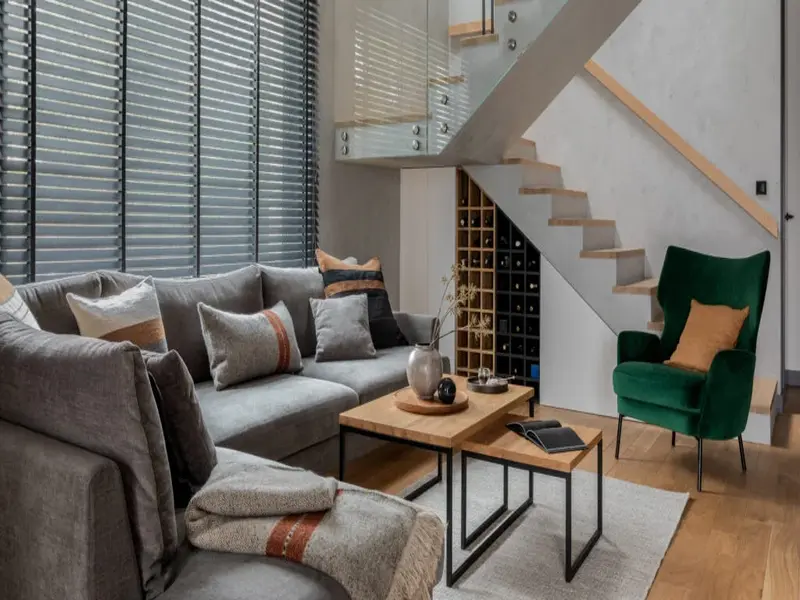
How to Achieve Contemporary Style:
- Focus on open spaces and natural light.
- Use a neutral color palette with bold accent pieces.
- Incorporate eco-friendly materials and sustainable practices.
- Opt for functional, sleek furniture and minimal decor. Learn more on The Spruce.
3. Traditional Interior Design
Traditional interior design is rooted in European sensibilities, featuring classic details, rich colors, and luxurious furnishings. This style exudes elegance and comfort with an emphasis on symmetry and timeless pieces.
Key Features:
- Rich Color Palette: Deep reds, greens, and browns dominate.
- Luxurious Fabrics: Use of silk, velvet, and brocade for upholstery and drapes.
- Antique Furniture: Classic furniture pieces with detailed craftsmanship.
- Symmetry: Balanced and symmetrical room arrangements.
- Ornate Details: Decorative moldings, wood paneling, and elaborate patterns.

How to Achieve Traditional Style:
- Choose rich, warm colors for walls and textiles.
- Opt for antique or reproduction furniture with intricate detailing.
- Incorporate luxurious fabrics and ornate patterns.
- Arrange furniture symmetrically to create a balanced look. Learn more on Houzz.
4. Scandinavian Interior Design
Scandinavian design, originating from the Nordic countries, emphasizes simplicity, functionality, and connection to nature. This style is known for its clean lines, light colors, and cozy atmosphere.
Key Features:
- Neutral Colors: Predominantly white, with touches of gray, blue, and natural wood tones.
- Minimalism: Simple, uncluttered spaces with functional furniture.
- Natural Elements: Use of wood, leather, and natural textiles.
- Light and Airy: Maximizing natural light and open spaces.
- Hygge: Creating a cozy and inviting atmosphere.
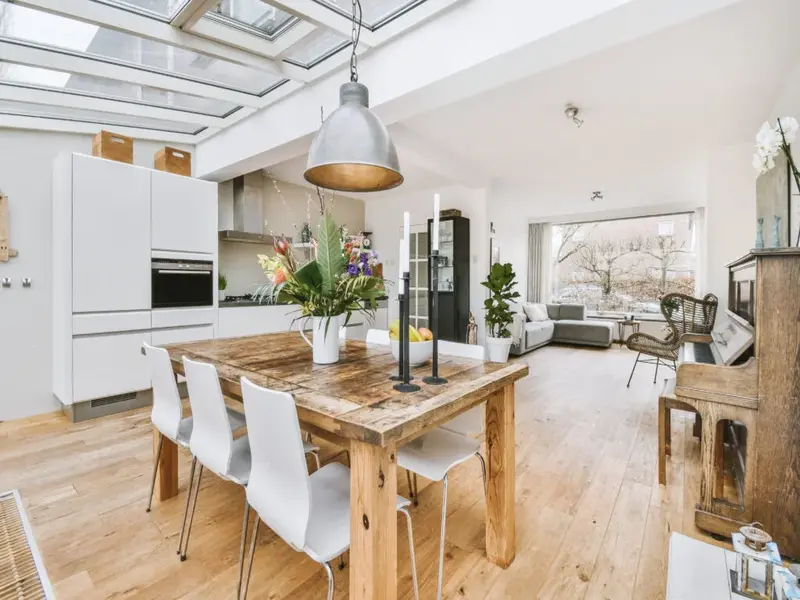
How to Achieve Scandinavian Style:
- Use a predominantly white color palette with natural wood accents.
- Choose simple, functional furniture with clean lines.
- Incorporate natural materials and textiles.
- Focus on maximizing natural light and creating a cozy atmosphere. Learn more on Homes & Gardens.
5. Industrial Interior Design
Inspired by the look of factories and warehouses, industrial design is characterized by raw materials, exposed structures, and utilitarian objects. This style combines ruggedness with modernity, creating unique and edgy spaces.
Key Features:
- Exposed Elements: Brick walls, steel beams, and ductwork.
- Raw Materials: Concrete, metal, and reclaimed wood.
- Neutral Colors: Grays, blacks, and browns dominate the palette.
- Open Spaces: Large, open floor plans with high ceilings.
- Functional Furniture: Simple, utilitarian furniture pieces.
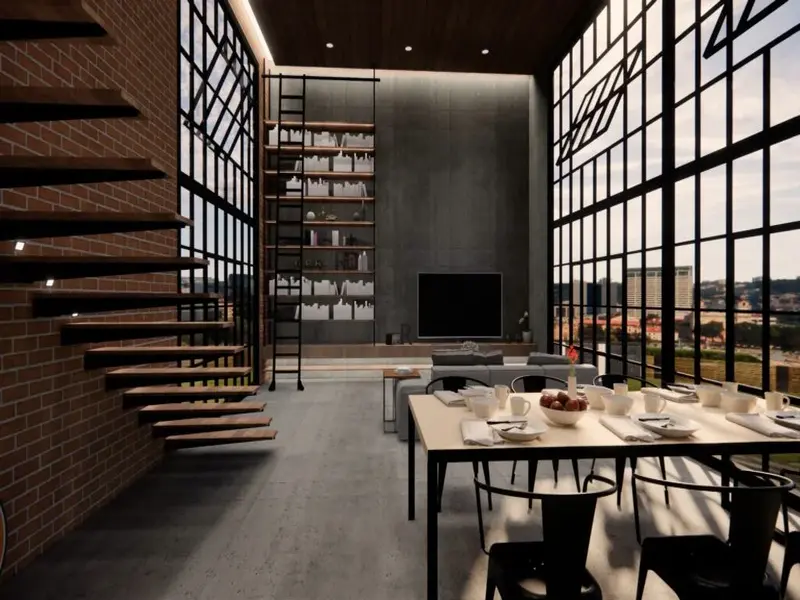
How to Achieve Industrial Style:
- Expose structural elements like brick walls and steel beams.
- Use raw materials like concrete and reclaimed wood.
- Choose neutral colors and simple, functional furniture.
- Create open spaces with high ceilings and large windows. Learn more on Elle Decor.
6. Bohemian Interior Design
Bohemian design, or boho, is all about individuality and self-expression. This eclectic style embraces a mix of colors, patterns, and textures, creating a vibrant and laid-back atmosphere.
Key Features:
- Vibrant Colors: Bold and rich hues like reds, purples, and blues.
- Eclectic Mix: Combining different patterns, textures, and styles.
- Global Influences: Incorporating elements from various cultures.
- Natural Materials: Use of wood, rattan, and natural fabrics.
- Layered Textiles: Rugs, throws, and cushions in various patterns and colors.
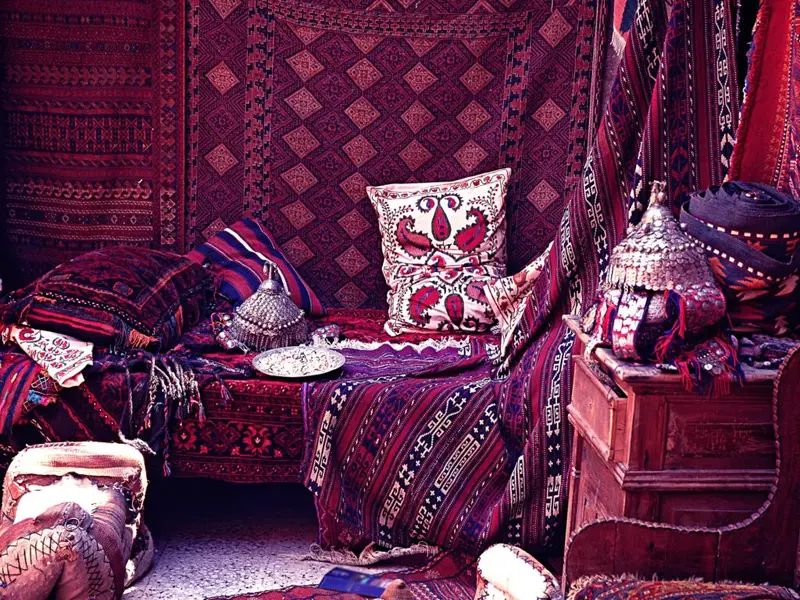
How to Achieve Bohemian Style:
- Use vibrant and rich colors throughout the space.
- Mix and match different patterns and textures.
- Incorporate decor elements from different cultures.
- Layer textiles like rugs and cushions to create a cozy atmosphere. Learn more on The Spruce.
7. Mid-century Modern Interior Design
Mid-century modern design, popular from the 1940s to the 1960s, is characterized by clean lines, organic shapes, and functional furniture. This style seamlessly blends form and function, creating timeless and stylish spaces.
Key Features:
- Clean Lines: Simple, uncluttered lines in furniture and decor.
- Organic Shapes: Use of curves and organic forms.
- Functional Furniture: Pieces that are both stylish and practical.
- Bold Colors: Pops of bold colors like orange, teal, and mustard.
- Natural Materials: Use of wood, metal, and glass.
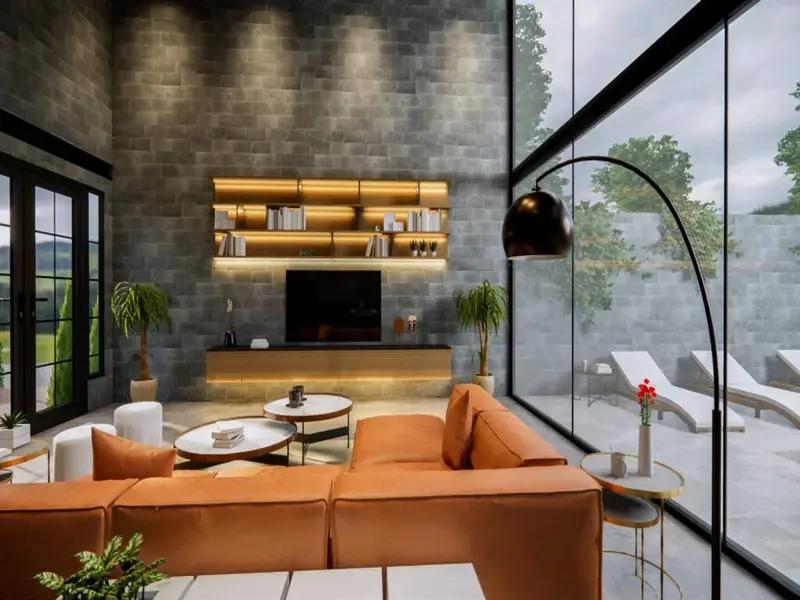
How to Achieve Mid-century Modern Style:
- Choose furniture with clean lines and organic shapes.
- Incorporate bold accent colors in a neutral base.
- Use natural materials like wood and metal.
- Focus on functional, stylish furniture pieces. Learn more on Dwell.
8. Rustic Interior Design
Rustic design emphasizes natural materials, rugged textures, and a warm, earthy color palette. This style creates cozy and inviting spaces that feel connected to nature.
Key Features:
- Natural Materials: Wood, stone, and metal.
- Earthy Colors: Browns, greens, and neutrals dominate.
- Rugged Textures: Rough-hewn wood, exposed beams, and stone.
- Cozy Atmosphere: Warm and inviting with a focus on comfort.
- Vintage Elements: Use of vintage or antique pieces.
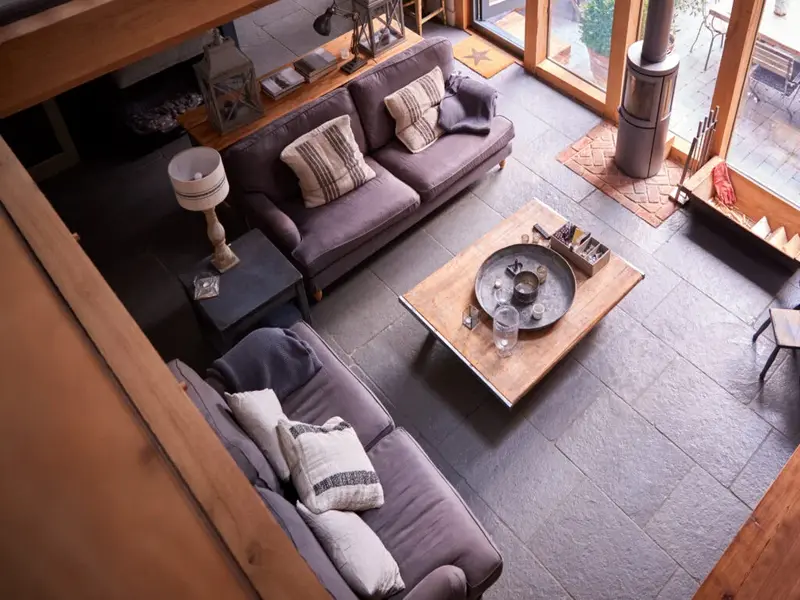
How to Achieve Rustic Style:
- Use natural materials like wood and stone extensively.
- Choose an earthy color palette with warm, neutral tones.
- Incorporate rugged textures and exposed beams.
- Add vintage or antique elements for character and charm. Learn more on Country Living.
9. Coastal Interior Design
Coastal design is inspired by the beach and ocean, creating bright, airy, and relaxed spaces. This style often features light colors, natural materials, and nautical elements.
Key Features:
- Light Colors: Whites, blues, and soft neutrals.
- Natural Materials: Wood, rattan, and linen.
- Nautical Elements: Stripes, seashells, and marine motifs.
- Open Spaces: Light and airy with lots of natural light.
- Relaxed Atmosphere: Casual and comfortable with a beachy vibe.
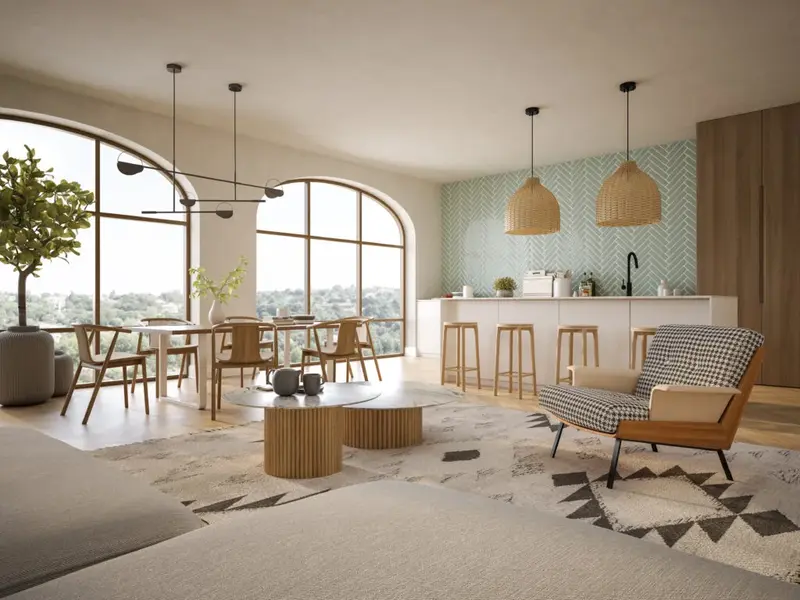
How to Achieve Coastal Style:
- Use a light color palette with whites, blues, and neutrals.
- Incorporate natural materials like wood and rattan.
- Add nautical elements like stripes and seashells.
- Create open, airy spaces with lots of natural light. Learn more on Better Homes & Gardens.
10. Transitional Interior Design
Transitional design blends traditional and contemporary elements, creating a balanced and harmonious look. This style offers the best of both worlds, combining classic elegance with modern simplicity.
Key Features:
- Neutral Color Palette: Whites, grays, and beiges dominate.
- Balanced Elements: Mix of traditional and contemporary furniture.
- Simple Lines: Clean lines with a touch of classic detailing.
- Functional Spaces: Practical and comfortable with a focus on function.
- Minimal Decor: Less is more; simple and uncluttered.
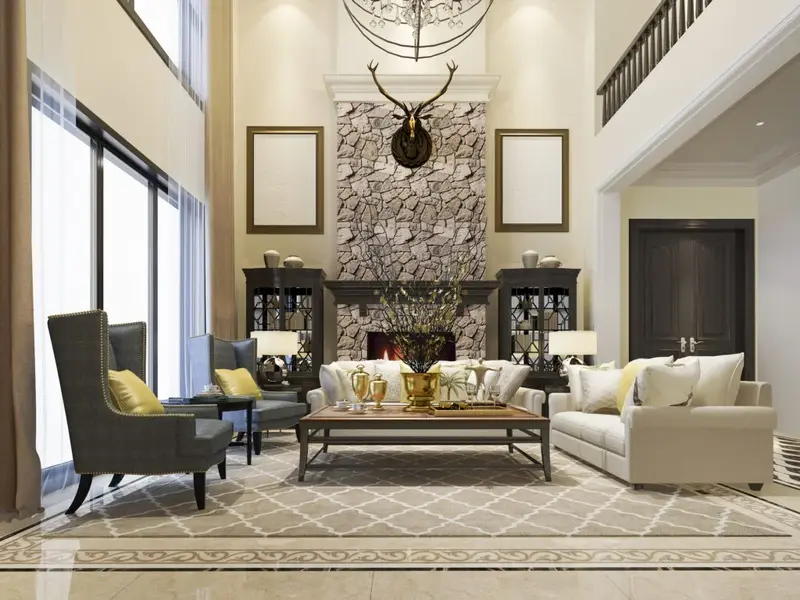
How to Achieve Transitional Style:
- Use a neutral color palette for a balanced look.
- Combine traditional and contemporary furniture pieces.
- Focus on clean lines with subtle classic detailing.
- Keep decor minimal and functional. Learn more on Elle Decor.
11. Farmhouse Interior Design
Farmhouse design is all about creating a warm, welcoming, and cozy atmosphere. This style combines rustic charm with modern comforts, incorporating natural materials and vintage elements.
Key Features:
- Natural Materials: Wood, metal, and stone.
- Warm Colors: Neutrals and earth tones with pops of color.
- Vintage Elements: Antique furniture and decor.
- Cozy Textiles: Layered rugs, throws, and cushions.
- Open Spaces: Light and airy with lots of natural light.
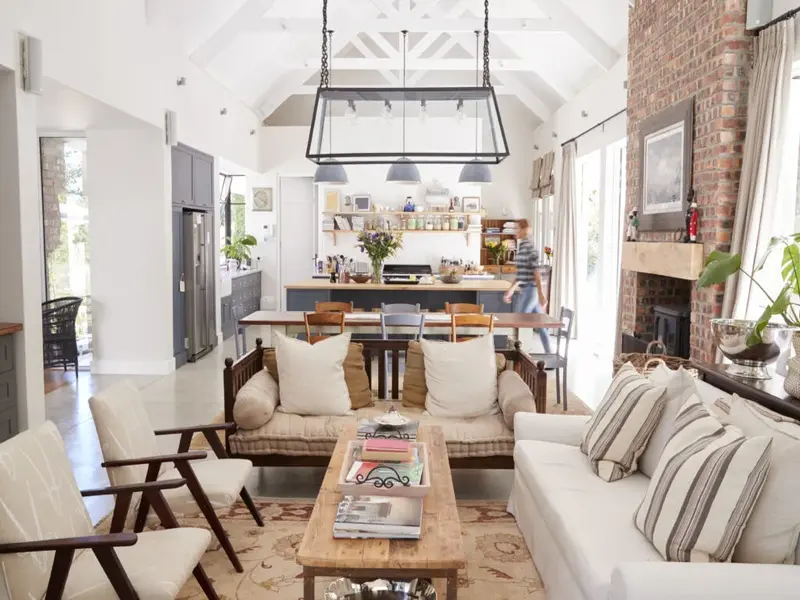
How to Achieve Farmhouse Style:
- Use natural materials like wood and stone.
- Choose warm, neutral colors with occasional pops of color.
- Incorporate vintage or antique furniture and decor.
- Create cozy spaces with layered textiles and plenty of natural light. Learn more on HGTV.
12. Shabby Chic Interior Design
Shabby chic design combines vintage charm with elegant, distressed elements. This style is characterized by its soft, feminine feel and an unpretentious, lived-in look.
Key Features:
- Soft Colors: Whites, pastels, and muted tones.
- Vintage Furniture: Distressed and painted vintage pieces.
- Floral Patterns: Use of floral prints in textiles and decor.
- Elegant Details: Crystal chandeliers, lace, and delicate fabrics.
- Comfortable Atmosphere: Cozy and inviting with a relaxed feel.
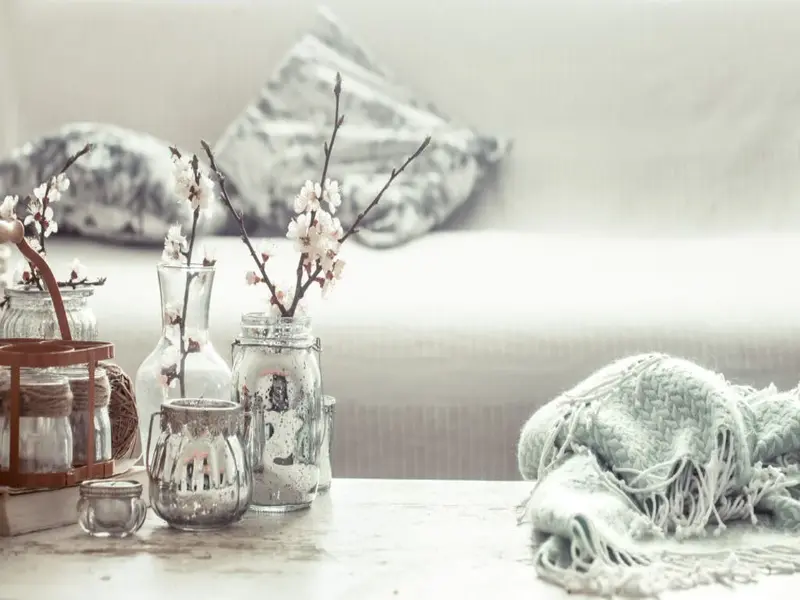
How to Achieve Shabby Chic Style:
- Use a soft color palette with whites and pastels.
- Choose vintage furniture with a distressed finish.
- Incorporate floral patterns in textiles and decor.
- Add elegant details like chandeliers and lace. Learn more on The Spruce.
13. Eclectic Interior Design
Eclectic design is all about mixing different styles, periods, and influences to create a personalized and unique space. This style is characterized by its diversity, creativity, and balance.
Key Features:
- Diverse Styles: Combining elements from various styles and periods.
- Personal Touches: Unique and personalized decor items.
- Bold Colors: Use of bold and vibrant color palettes.
- Mix of Textures: Combining different materials and textures.
- Balanced Chaos: Creating a cohesive look despite the variety.
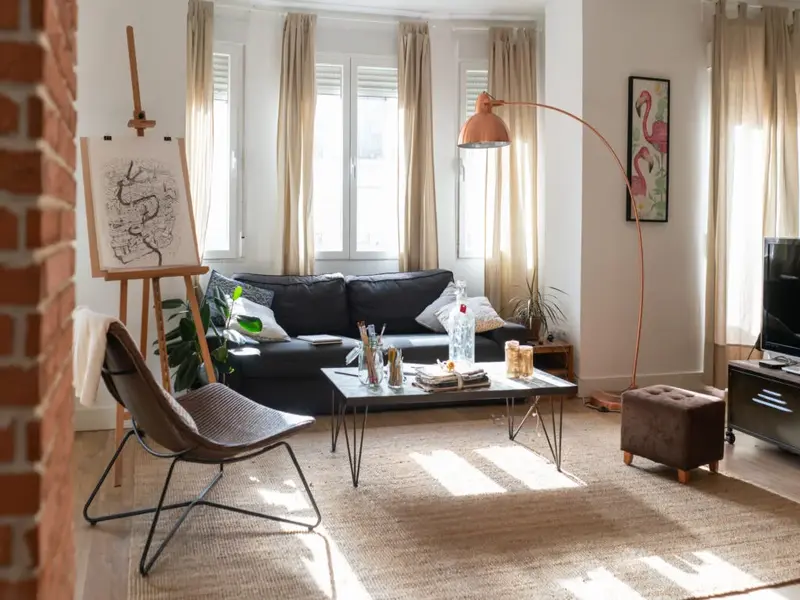
How to Achieve Eclectic Style:
- Mix and match furniture and decor from different styles and periods.
- Incorporate personal and unique decor items.
- Use bold colors and a variety of textures.
- Create balance and cohesion despite the diverse elements. Learn more on Architectural Digest.
14. Minimalist Interior Design
Minimalist design focuses on simplicity, functionality, and the idea that less is more. This style is characterized by its clean lines, uncluttered spaces, and a neutral color palette.
Key Features:
- Neutral Colors: Whites, grays, and blacks dominate.
- Functional Furniture: Simple and practical furniture pieces.
- Open Spaces: Uncluttered and open floor plans.
- Clean Lines: Simple lines and geometric shapes.
- Minimal Decor: Less is more; minimal accessories and decor.
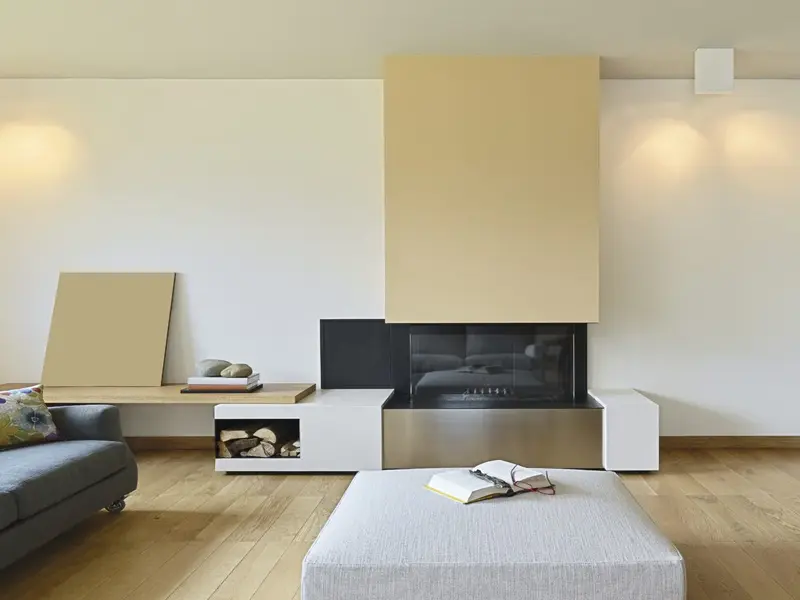
How to Achieve Minimalist Style:
- Use a neutral color palette with minimal accessories.
- Choose functional and simple furniture pieces.
- Keep spaces uncluttered and open.
- Focus on clean lines and geometric shapes. Learn more on The Spruce.
15. Art Deco Interior Design
Art Deco design, popular in the 1920s and 1930s, is characterized by its bold geometric patterns, luxurious materials, and vibrant colors. This style exudes glamour, elegance, and sophistication.
Key Features:
- Geometric Patterns: Bold and striking geometric designs.
- Luxurious Materials: Use of marble, gold, and lacquered surfaces.
- Vibrant Colors: Rich and vibrant colors like emerald green, sapphire blue, and ruby red.
- Ornate Details: Intricate detailing and decorative elements.
- Glamorous Atmosphere: Luxurious and opulent feel.
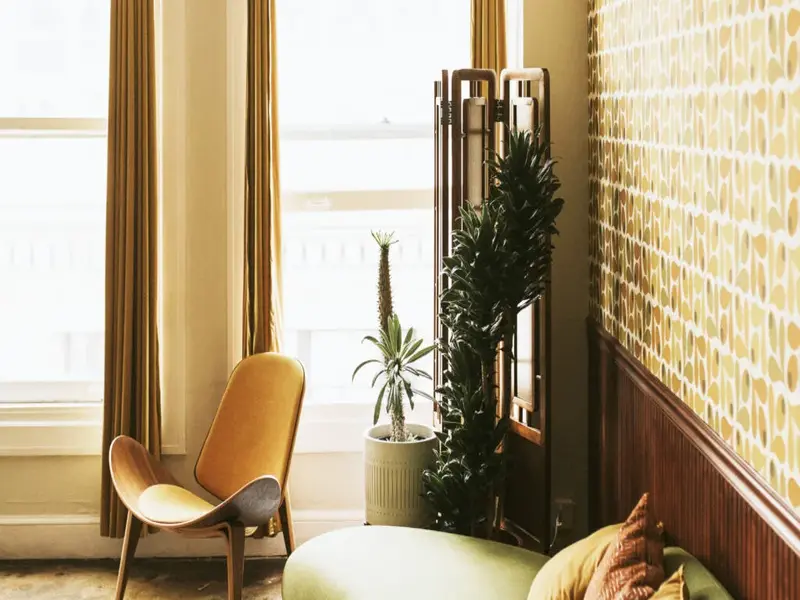
How to Achieve Art Deco Style:
- Use bold geometric patterns in textiles and decor.
- Incorporate luxurious materials like marble and gold.
- Choose vibrant and rich colors for accents.
- Add ornate and decorative details to enhance the glamour. Learn more on Elle Decor.
Conclusion
Choosing the right interior design style can transform your home into a space that reflects your personality, meets your needs, and delights your senses. Whether you prefer the clean lines of modern design, the cozy charm of farmhouse style, or the eclectic mix of bohemian decor, there’s a style for everyone. By understanding the key features and elements of each style, you can create cohesive and beautiful interiors that you’ll love for years to come. Happy decorating!
